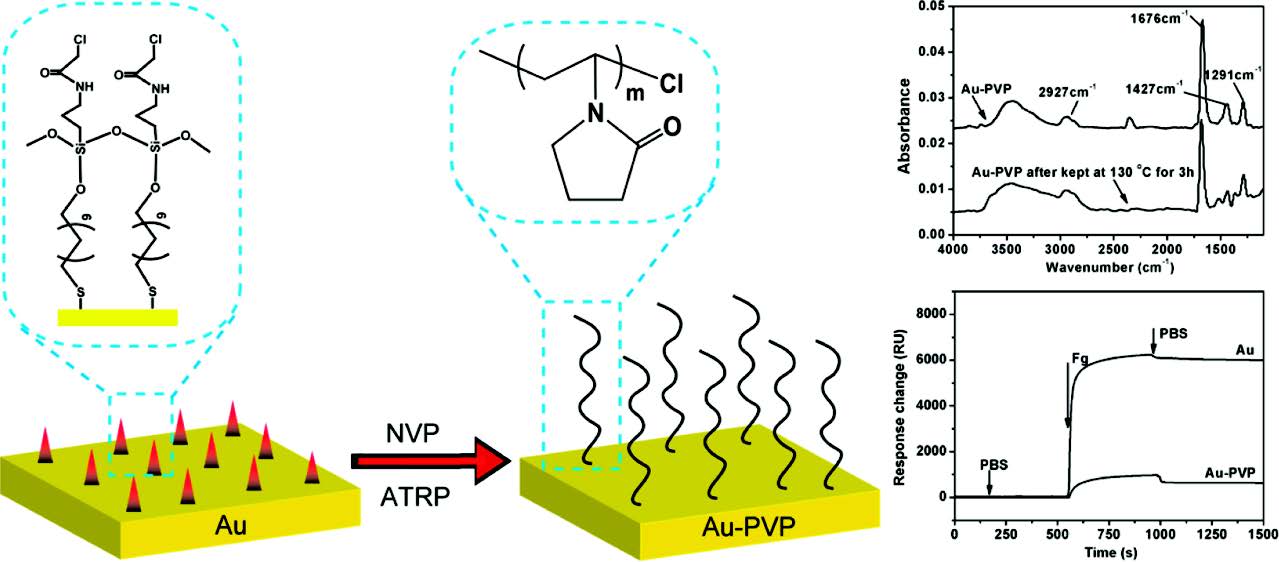Facile Synthesis of Thermally Stable Poly(N-vinylpyrrolidone)-Modified Gold Surfaces by Surface-Initiated Atom Transfer Radical Polymerization
Langmuir,
2012,
28,
9451-9459.
文章链接:http://dx.doi.org/10.1021/la300728j
刘小莉博士在Langmuir上发表研究论文
发布日期:2012-05-25
Well-controlled polymerization of N-vinylpyrrolidone (NVP) on Au surfaces by surface-initiated atom transfer radical polymerization (SI-ATRP) was carried out at room temperature by a silanization method. Initial attempts to graft poly(Nvinylpyrrolidone)(PVP) layers from initiators attached to alkanethiol monolayers yielded PVP films with thicknesses less than 5nm. The combined factors of the difficulty in the controllable polymerization of NVP and the instability of alkanethiol monolayers led to the difficulty in the controlled polymerization of NVP on Au surfaces. Therefore, the silanization method was employed to form an adhesion layer for initiator attachment. This method allowed well-defined ATRP polymerization to occur on Au surfaces. Water contact angle, X-ray photoelectron spectroscopy (XPS), and reflectance Fourier transform infrared (reflectance FTIR) spectroscopy were used to characterize the modified surfaces. The PVP-modified gold surface remained stable at 130 °C for 3 h, showing excellent thermal stability. Thus,post functionalization of polymer brushes at elevated temperatures is made possible. The silanization method was also applied to modify SPR chips and showed potential applications in biosensors and biochips.

